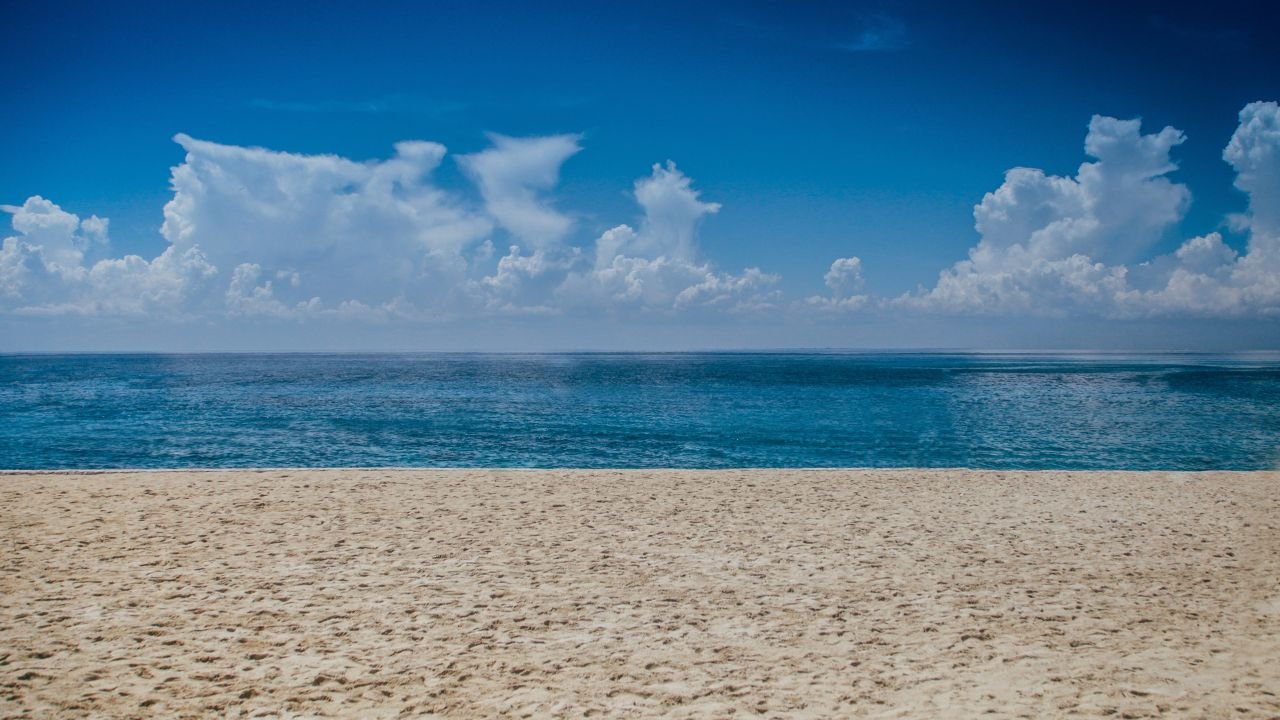Top 10 weird and unusual sand beaches on Earth. Nature never ceases to amaze us with its immense creativity, creating beaches that defy our expectations and enchant us. From the glittering shores of glass beaches, where discarded glass transforms into sparkling jewels in the sunlight, to the mysterious allure of green beaches, where emerald hues blend with the sand, each is a unique coastal wonder. It is a proof of nature’s artistry.
Walking along the shore strewn with shards of glass, polished by relentless waves into a kaleidoscope of colors that sparkle like diamonds. It’s a straight-up dream scene, where the ordinary is transformed into the extraordinary, inviting you to marvel at the beauty of recycling in nature’s way.
Green beaches where the sand takes on an otherworldly hue create an atmosphere of mystery and magic. The presence of some mineral, or perhaps the play of light that creates this fascinating spectacle? Whatever the reason, these beaches are a reminder that nature’s palette knows no bounds, painting scenes that captivate our senses and ignite our imagination.
You can stand on these extraordinary beaches and feel the warmth of the sun listen to the gentle lapping of the waves and marvel at the wonders around you. Moments like these remind us of the beauty and magic that exists in the natural world, ready to surprise and delight us at every turn.
Table of Contents
Here Are The 10 Weird and Unusual Sand Beaches on Earth
10: Ramla Bay, Malta
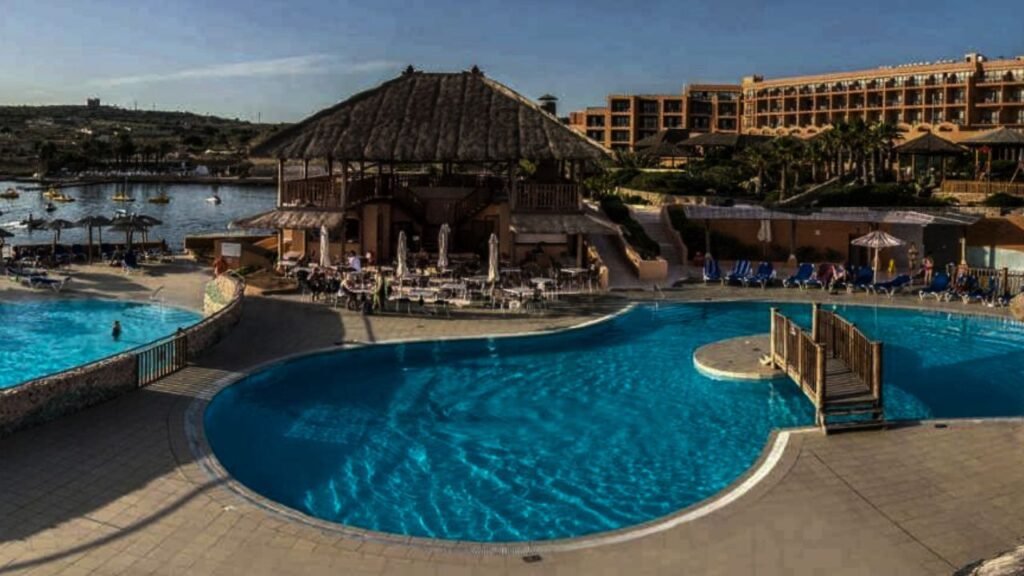
Ramla Bay has got a beach of reddish-orange-colored sand, in Gozo in the Maltese Islands. It lies on the northeast coast of the island, between the Bays of Malsaforn and San Blas. The closest village is Xaghra, and it’s also reachable from Nadur by bus. The beach is wide and sandy, making it a popular tourist destination known in Maltese as Ramla l-Hamra, meaning Red Sandy Beach.
The area surrounding the beach provides views of historical importance. The Romans had built a villa here and decorated it with marble and stucco. It was so luxurious and refined that the building had its hot bath supplied with water from a nearby spring. Surrounded by hills on both sides, the sandy path on the eastern hillside leads to the Calypso Cave.
Now, according to legend, this is the cave Homer refers to in The Odyssey. The nymph Calypso lived in this cave when she entertained Ulysses for seven years before he moved ahead with his journey. It is a small piece of paradise away from the noise and strife of modern life, and many people would like it to stay that way.
Approved by the Malta Environment and Planning Authority on 6 June 2007, Construction of 23 villas next to Calypso Cave. Now, despite the objection of the Superintendent, the Alternattiva Demokratika, and Malta’s main environmental organizations, MEPA did not request an environmental impact pack assessment for the development, leading to a call for their resignation.
09: Papaya Green Sand Beach
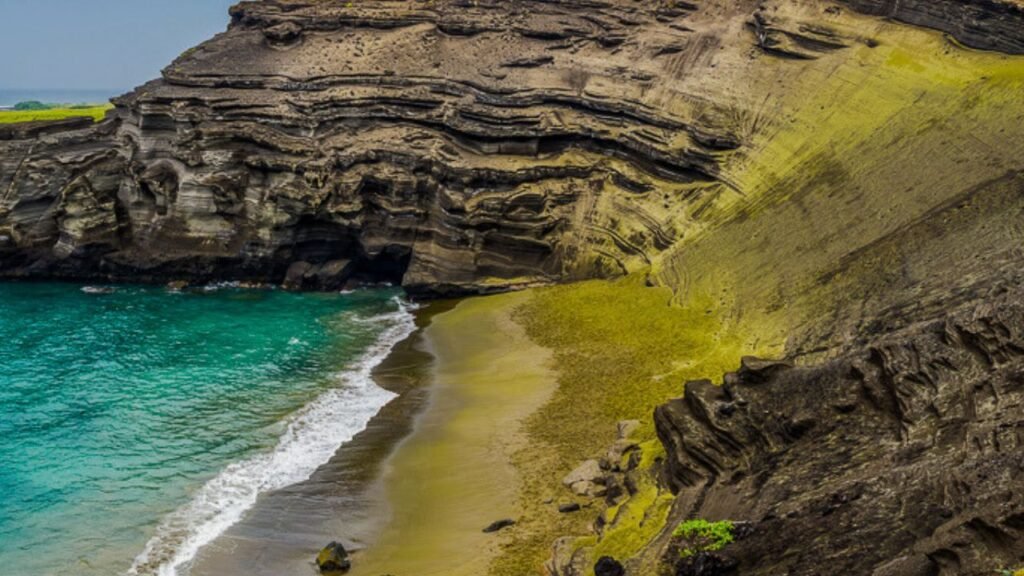
Alright, we’re staying in Hawaii. If the beach looks like it’s covered in grass, then this isn’t your average kind of sand. Papaya Beach is located near South Point in the Kaʻū District of the island of Hawaii. It’s one of only four green sand beaches in the world, the others being Talofofo Beach in Guam, Punta Cormorant on the Galápagos Islands, and Hornes Dovet in Norway.
It gets that distinctive color from Olivine sand eroded out of the enclosing volcanic cone and is located in a bay half-circled by Puʻu Mahana. It was formed over 49,000 years ago and associated with the Southwest Rift of Mauna Loa. Unlike Cinder cones, tuff rings consist mostly of volcanic ash produced by violent interactions of magma with groundwater.
The fragmented volcanic material of the tuff ring contains Olivine, a silicate mineral containing iron and magnesium. The source of the green coloration of the beach sand is the Olivine crystals, whose green color is due to ferrous iron, which are winnowed from the eroding headland by the action of the sea. Elsewhere on the Big Island, Olivine is enclosed in lava rock rather than volcanic ash.
Olives are not easily freed from enclosing rock and tend to weather away rather than accumulate. Although the crystals eventually break due to weathering. After chemical action and washing, continued erosion of the tuff ring ensures a continuous supply of sand for the foreseeable future. Supplies will run out, and the beach will be visible like anyone else.
08: Rockaway Beach, California
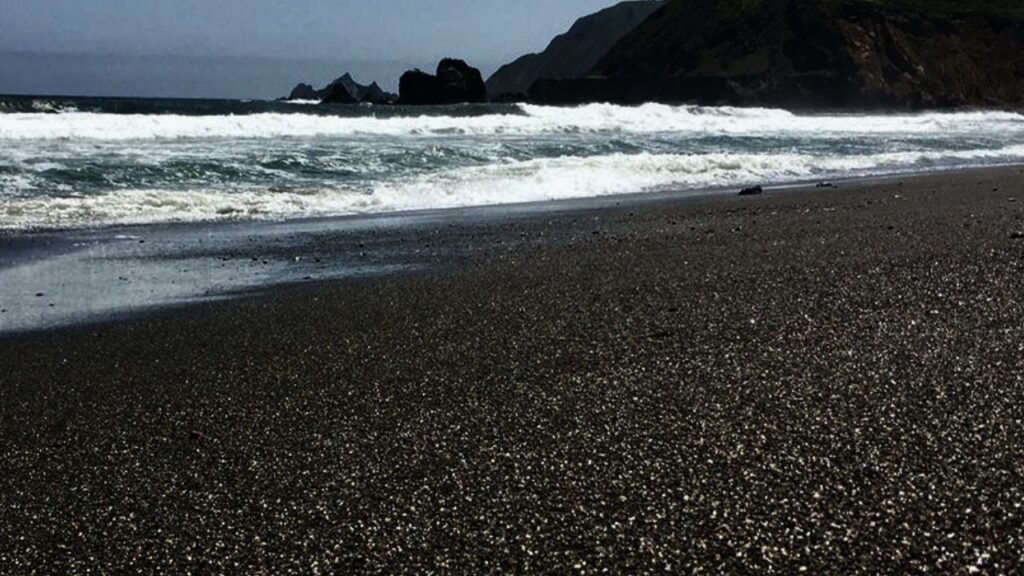
You could say that most types of sand could be described as brown, but not the rich, chocolatey variety of dark brown you find here. Rockaway Beach is a shoreline area of the Pacific Ocean in the southern portion of Pacifica, California, in the US, about 7 miles south of the city of San Francisco. It’s located within a gently curving embayment, with direct access via Rockaway Beach Avenue and providing easy access to Highway 1. It is noted for its scenic overlook and is one of the cleanest beaches in the San Francisco Bay Area.
The Rockaway Beach area has played a role in local history since the arrival of the Portola Expedition, the Spanish explorers credited with the discovery of San Francisco Bay as early as 1776. Limestone quarried in the Rockaway Quarry lime pits was used to whitewash the newly built Presidio of San Francisco. More recent investigations suggest that early settlements in San Pedro Valley also used this limestone for their foundations, and this is very important to us in our list of unusual sand beaches because the sand’s brown hue is due to limestone erosion mixing with volcanic greenstone.
In 1907, the Rockaway Beach Quarry was established as a continually operating commercial entity known as the Stone Brothers. After the construction of the Ocean Shore Railroad in 1907, limestone from this quarry was conveyed to assist with the rebuilding of San Francisco following the 1906 San Francisco earthquake. Moving on to…
Read More: Strangest Uninhabited Islands
07: Perissa Black Sand Beach Greece
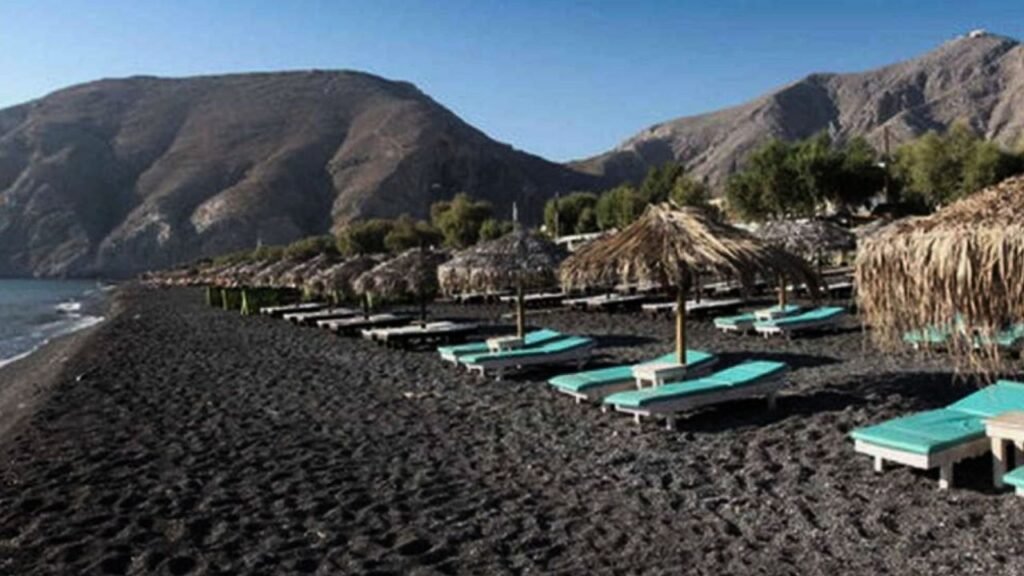
Alright, we’re back to a beach with black sand, and why not? You’ve got to admit, it is kind of striking. Parisa is a village on the island of Sorini, Greece. It’s located about 13 km to the southeast of Fira, near the Mesa Vouno Rock. Parisa has magnificent beaches on the Aegean Sea. There are remnants of the ancient early Christian Church of St. Irene here, and it’s from the name of this church in contracted form that the island takes its name, Cerini.
The island was also the site of one of the largest volcanic eruptions in recorded history, the Minoan eruption, sometimes called the Thea eruption, which happened about 3600 years ago at the height of the Minoan civilization. The eruption left a large caldera surrounded by volcanic ash deposits hundreds of meters deep, hence the dark color. Cerini is the largest island of a small circular archipelago which bears the same name as the remnant of a caldera.
The southernmost member of the Cyclades group of islands, with an area of about 28 square miles and a population of about 15,000. The most active volcanic center in the Southern Aegean Volcanic Arc. Though what remains today is chiefly a water-filled caldera, the volcanic arc is approximately 300 meters long and about 12 to 25 miles wide. The region first became volcanically active around 3 to 4 million years ago, though vulcanism on Thea began around 2 million years ago with the extrusion of dacitic lavas from vents around Eoi.
06: Shelter Cove, California
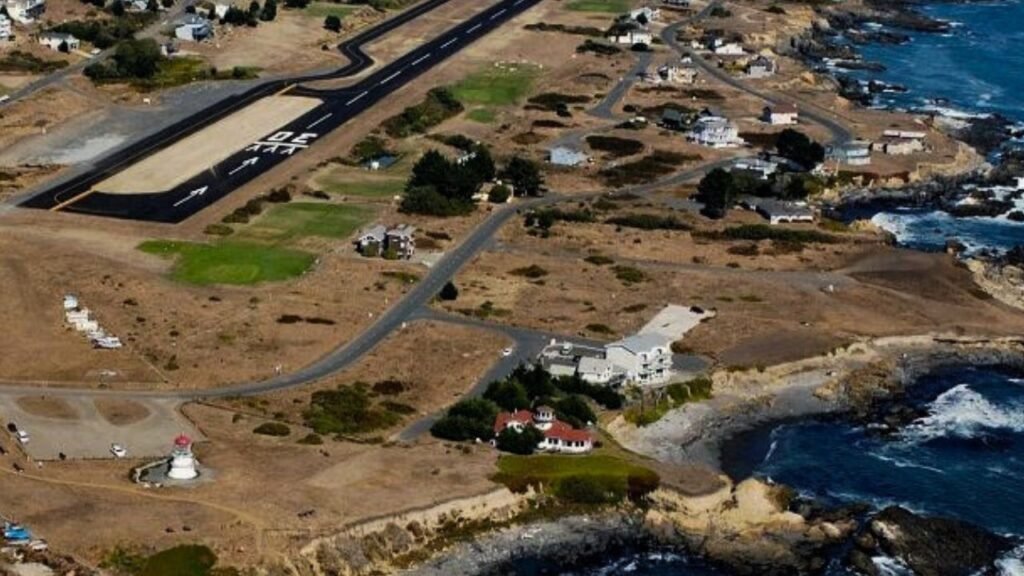
We live in a world of political extremes, so you’d be forgiven for assuming there were no gray areas left in the world anymore. Well, if you think that, then you never visited Shelter Cove. The smoky color of the sand here comes from eroding shale cliffs along the shore, but the sand isn’t the only gray attraction here. You can spot migrating gray whales as well as seals and sea lions.
Shelter Cove is about 138 feet high and is on California’s Lost Coast where King Range meets the Pacific Ocean. There are parks such as Black Sands Beach, the Mals Park Seal Rock picnic area, and Abalone Point. Because of the very steep terrain in the coastal area surrounding this cove, the highway builders constructing State Route One, the Shoreline Highway, decided it was too difficult to build it along the stretch of what is now the Lost Coast. As a result, the small fishing village of Shelter Cove remained very secluded from the rest of the populous state despite being only 230 miles north of San Francisco, and it is accessible by boat, a small mountain road, or by a small Shelter Cove Air Report.
The famous activities of this area are fishing, hiking, diving for abalone, whale watching, and outdoor activities. Manu had seen its share of excitement over the years near The Cove. On July 21st, 1907, the coastal passenger steamer Colombia collided with the steam sooner San Pedro amidst the fog. The Colombia subsequently sank, killing 88 people. Although badly damaged, San Pedro stayed afloat and helped rescue Columbia survivors.
05: Reynisfjara Black Sand Beach, Iceland
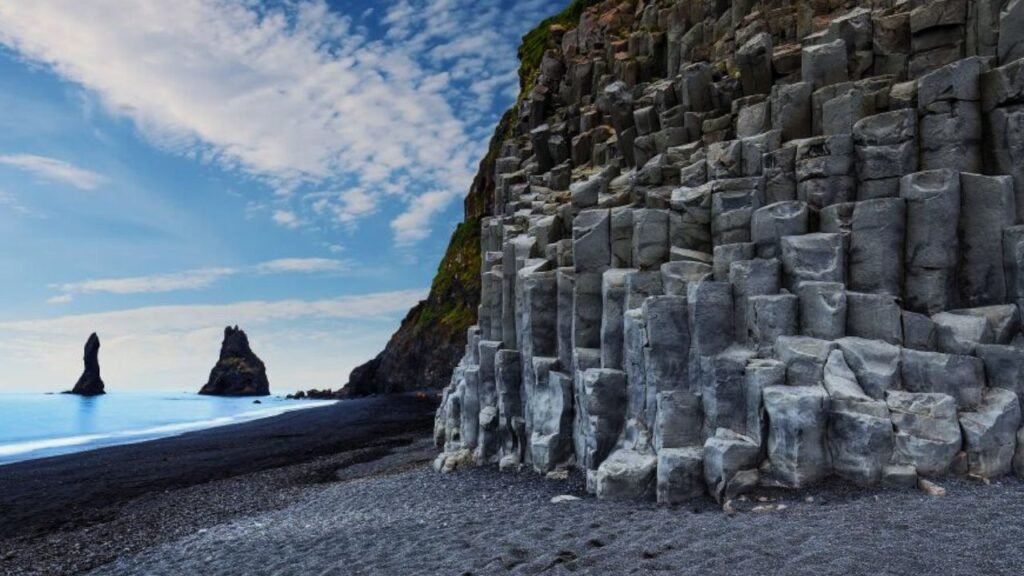
Alright, here we are again, and to quote the great Australian poet ACDC, we’re “Back in Black.” Dangar is Basalt sea stacks situated near the mountain Reynisfjara, in a village in southern Iceland. It’s famous for a black sand beach that was ranked in 1991 as one of the 10 most beautiful non-tropical beaches in the world. To be specific, in 2021, Reynisfjara was rated the sixth-best beach in the world.
Legend has it that the piles originated when two trolls towed a three-masted ship to land in failure, and when the day dawned, they became stone needles. Contemporary legends, however, note the story of a husband who found his wife taken by the two trolls. Frozen at night, the husband made the two trolls swear to never kill anybody again; his wife was the love of his life whose free spirit was unable to provide a home, and she found her fate out among the trolls, rocks, and sea at Reynisfjara.
So yeah, trolls are very much a theme when it comes to this place, but the area also had its fair share of media attention in recent years. Reyna Dragar appears several times throughout Netflix’s Icelandic original series “Katla” and is particularly significant to the series’ protagonist, GMA, as the site of her mother’s death.
04: The Palm Jumeirah, Dubai
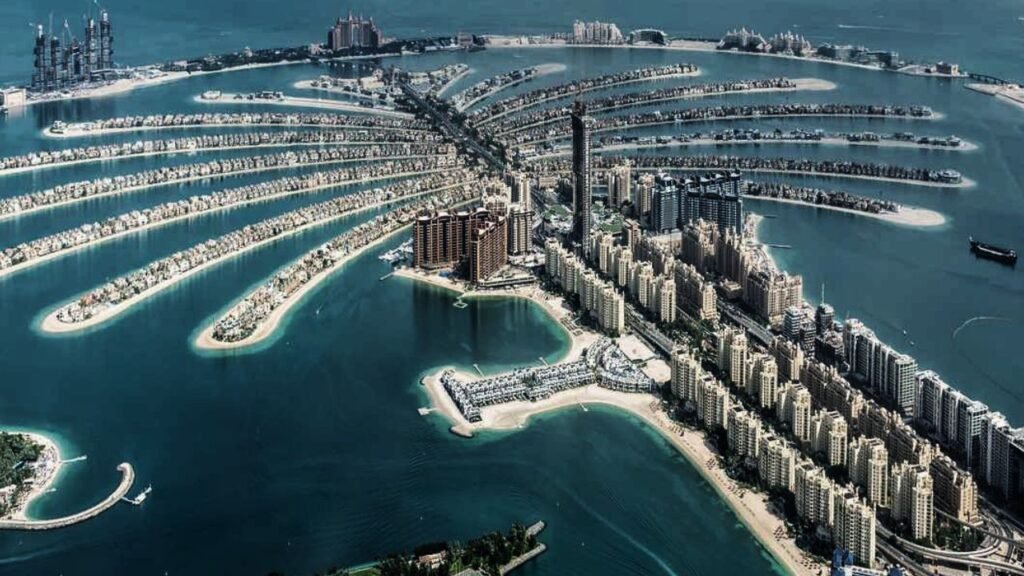
Alright, so far, we’ve seen plenty of unusually colored beaches, so how about we change things up a bit with an unusually shaped one? The Palm Jumeirah is an archipelago of artificial islands in the Persian Gulf in Dubai in the United Arab Emirates. It’s part of a larger series of developments called the Palm Islands, which include the Palm Jebel Ali and Palm Deira, all of which were created using land reclamation.
Early 2020 saw an increase in wildlife such as dolphins around Palm Jumeirah, amid a decrease in human activity during the COVID-19 pandemic. Construction complications were partly to blame for the extended delay in project completion, the date of which was pushed back several times and there was a delay of almost 2 years.
But that wasn’t the only issue, not by a long shot. In 2009, the New York Times reported that NASA’s laser altimeter satellite had measured the Palm as sinking at the rate of 5 mm a year. In response, the developer Nakheel Properties said they received no reports of structural problems of a type that would be expected if there were any subsidence. Whom would you believe, the property developer or NASA?
03: The Glowing Beach, Vaadhoo Island in the Maldives
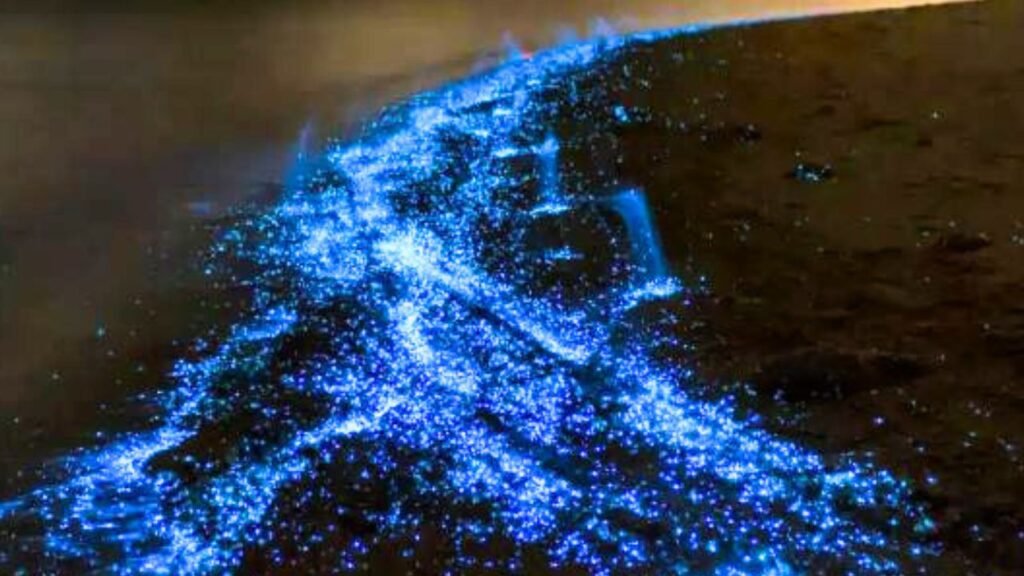
Alright, we’re going to take a break from the sand for a brief moment and talk about a phenomenon that happens on many beaches around the world: bioluminescence. But this beach stands out. The Sea of Stars is famous for Vaadhoo Island. It is produced by marine bioluminescence phytoplankton known as dinoflagellates.
Woodland Hastings of Harvard University has, for the first time, identified a special channel in the dinoflagellate cell membrane that responds to electrical signals, offering a potential mechanism for how the algae create that unique illumination. In a general sense, the principal chemical reaction in bioluminescence involves a light-emitting molecule and an enzyme generally called luciferin or Lucifer. And this is something that has been recorded long before video photography and the internet ever existed.
Both Aristotle and Pliny the Elder mentioned that damp wood sometimes gives off a glow. Several centuries later, oxygen was involved as shown by Robert Boyle In both wood and glowworms this process. However, it wasn’t until the late 19th century that bioluminescence was properly investigated.
02: Hyams Beach, New South Wales, Australia
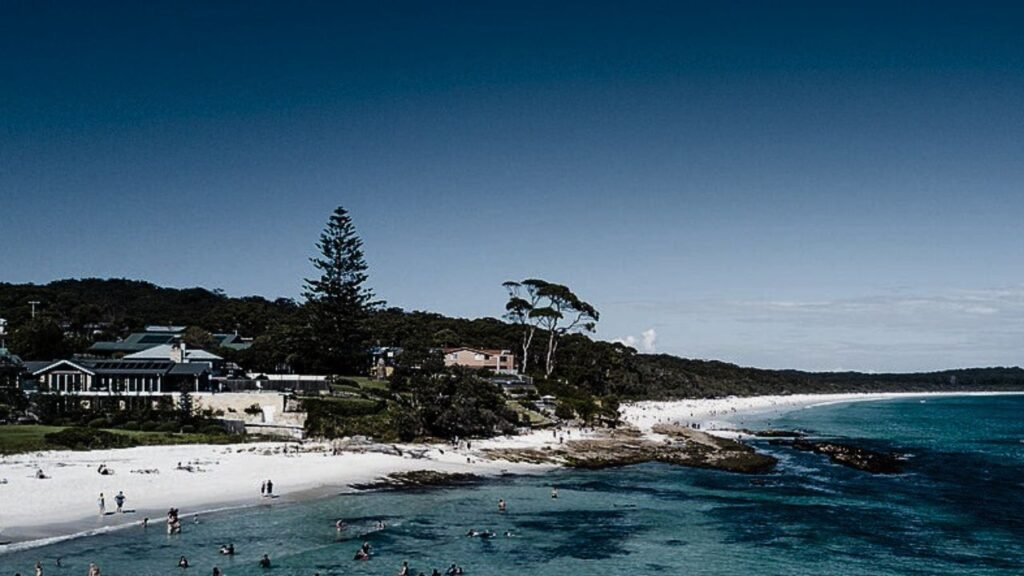
Sure, plenty of beaches are billed as having white sand, but the absolute whitest sand, at least according to Guinness World Records, is at Hyams Beach on Jervis Bay, about 120 miles south of Sydney. You know, the turquoise waters aren’t that bad either, offering amazing diving, snorkeling, and whale watching.
The village is bordered by two beaches, Chinaman’s Beach to the north and Seaman’s Beach, sometimes referred to as Sailor’s Beach, to the south, with Hyams Beach being in the center. The village’s success is kind of known to backfire, with its population of 112 quickly springing to 4,000 people in a few summer evenings, with the streets becoming engulfed with traffic and tourists.
So when the village is overrun by cars, access to emergency vehicles and evacuation in case of bushfire becomes impossible. Now, the council is closing the village once the 450 street parking spaces are at effective capacity, and the local Bush Care Group is working hard to revegetate the mounds, which have been damaged a lot by tourists who have pushed through the mounds to find shade or an illegal camping site.
01: Shell Beach, Western Australia
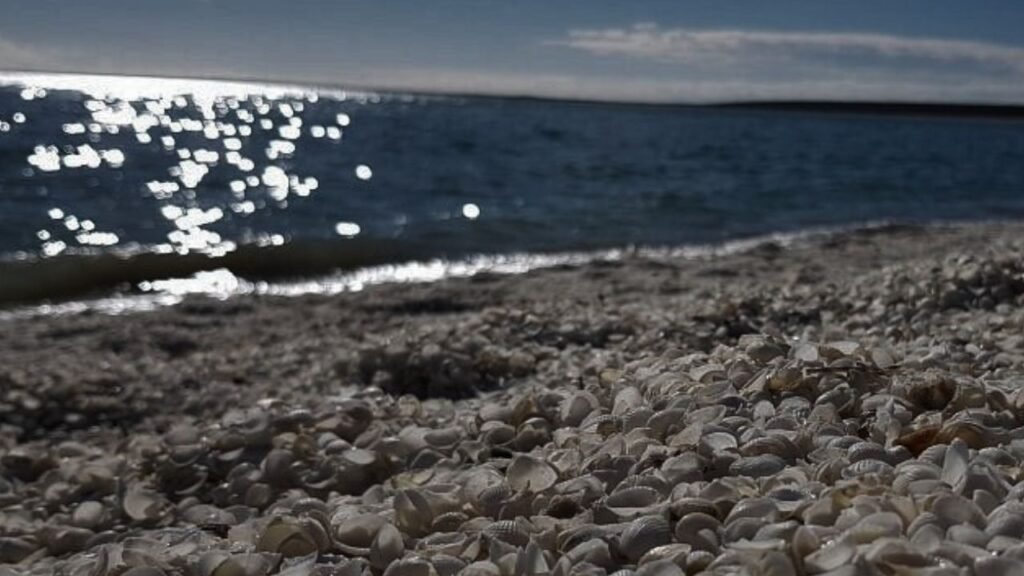
Alright, we’re staying in Australia for the number one. We started with glass, and we’re finishing with shells. Shell Beach is a beach in the Shark Bay region of Western Australia, located about 28 miles south of Denham. The beach was named after the great abundance of the shells of a certain cockle species.
The seawater here has high salinity due to both geomorphology and local climate, and this high salinity has allowed the cockle to proliferate unchecked since its natural predators haven’t adapted well to this environment. These spheres formed limestone known as Coquina before Shark Bay became a World Heritage Site. Coquina was mined and used to construct many buildings.
The cockle that supplies the millions of small white shells accumulated on Shell Beach is the bivalve Cardiidae cockle. Cockles of this species from Shark Bay differ from others in their shape and smaller size. The reason for this is not known. The high saltwater concentration levels in this area have resulted in the proliferation of this species, and they’re particularly tolerant to increased salinity.
In other words, the small white shells live untroubled in the millions in these scattered areas of the two shallow bays. It’s thought that this cockle was first deposited here about 4,000 years ago, and over the years, the deposits have cemented to form soft coquina limestone.
Rainwater then completely dissolves small quantities of calcium carbonate, of which the shells are composed. As the water evaporates, calcium carbonate is produced as calcite crystals, which connect the spheres to each other. And what better way to finish off our list than a beach as eye-catching as this one?

